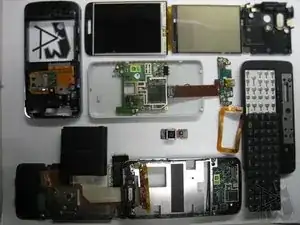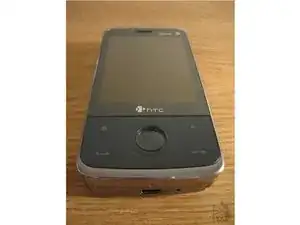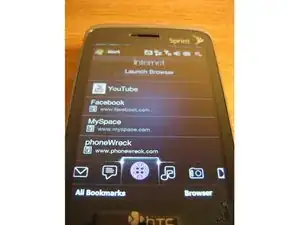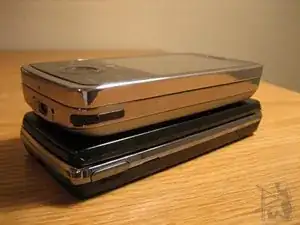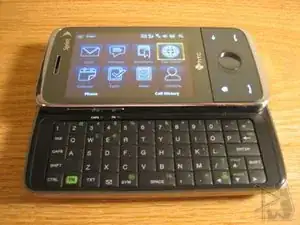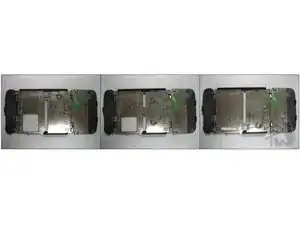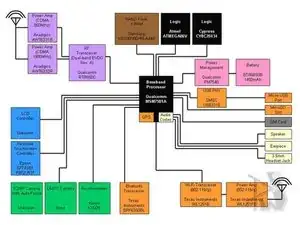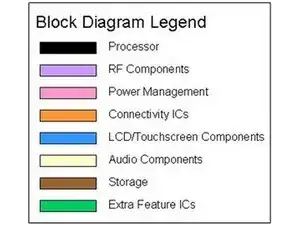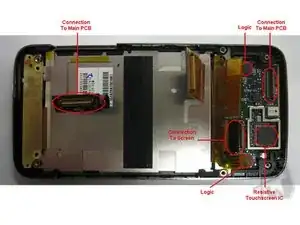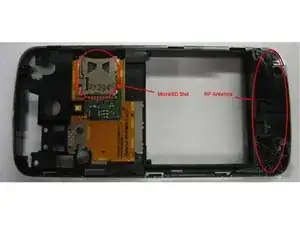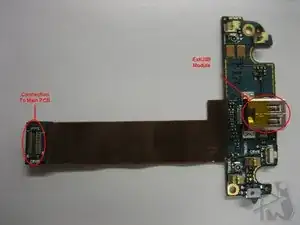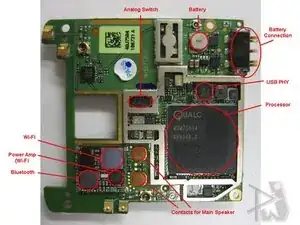Introduction
Overview of the HTC Touch Pro hardware with circuit diagrams and labeled chips. See www.phoneWreck.com for more detailed information on the HTC Touch Pro and other devices.
Tools
-
-
Many praises have been given to HTC ever since its recent diversion into the self-branded handset space. Being the newer, more functional, but bulkier sibling of the million-selling Touch Diamond, the Touch Pro now zooms its way into CDMA networks on both Sprint and Verizon.
-
HTC has done well in this phone (probably more than any other Windows Mobile phone) to cover up, well, Windows Mobile. With its TouchFLO 3D streamlining a lot of the WinMo functions for touch use, it’s definitely much more pleasant to use.
-
The interface is fluid and it runs really smoothly without too many hiccups. The Sprint color schemes are also pleasing to the eye.
-
-
-
The resistive screen is among the best of the resistive world. The screen is very bright, there’s minimal distance between the film and the screen, and it’s very solid underneath. With the minimal distance, it almost feels like a glass screen. It’s easy to glide your finger across and doesn’t require much effort.
-
The chrome sides and the glossed and tinted metallic front are quite the stunner. The logos from Sprint and HTC are also among the best and the sleekest.
-
Unfortunately, the back cover feels rather cheap, as it’s basically a thin sheet of plastic.
-
Also, the sheer size of the device is a pretty big downer. Those looking for a QWERTY device may be expecting the size, but in hand, it feels even bigger than the pictures.
-
-
-
The phone is generally quite solid with front facing buttons that look great and give a good feeling when depressed.
-
The cover creaks a little when you firmly grasp the device, and considering the amount of use by a smartphone like this, the lack of foresight on this part really hurts it.
-
Also, the sliding mechanism is definitely not as smooth as the XPERIA X1’s nor the G1’s. The bottom of the screen module scrapes over the keys, resulting in an inelegant transition.
-
The other interesting thing to note is the four torsional springs implemented just to slide the device. In fact, the small and light cover, uses a dual torsional spring, just to hide the ribbon.
-
-
-
We chose to do this teardown, because most people have noted the insides of the GSM teardown and its highly similar architecture with the GSM Diamond.
-
Instead of the Qualcomm MSM72xx processors, the CDMA Touch Pro uses the Qualcomm MSM7501A along with the traditional Qualcomm chipset – including the Qualcomm PM7540 and the Qualcomm RTR6500.
-
The phone uses a Qualcomm MSM7201A processor that handles most of the dirty work. Running Windows Mobile is perfectly fine, and it swallows everything you throw at it. The TouchFLO 3D interface runs smoothly most of the time, but accessing some of its functions will expose some lag issues.
-
-
-
Shown at left is the screen module. Here we see an Epson IC for what we believe controls the resistive touchscreen, as it’s also found on the XPERIA X1.
-
Also interesting to note is two ICs for microcontrollers, from Atmel and Cypress.
-
When syncing and sideloading onto the computer, Microsoft’s ActiveSync works as it should, but slows down file tranfers dramatically when compared to Mass Storage mode. ActiveSync ended up at 1.4MBps while Mass Storage gave me about 3.2MBps. The speeds are expected as the hardware architecture is very similar to the XPERIA X1, but its still nowhere near as fast as the Bold’s blazing 15MBps mark.
-
-
-
The main IC diagram can be found here.
-
Again, the processor integrates the GPS, audio codecs, and also the USB controller.
-
Shown on the main PCB (at left), we see that Anadigics has won the design for the dual-band CDMA power amps, with EVDO Rev. A capabilities.
-
Samsung, in traditional memory fashion, has gotten the win for the memory chip with integrated NAND Flash and RAM.
-
On the other side of the PCB, we have the processor and most of the rest of the chips. The USB PHY is an SMSC chip, similar to pretty much the rest of the HTC devices. Texas Instruments has its Bluetooth and Wi-Fi chipset, BRF6350BL and WL1251B respectively, with the WL1251FE power amp.
-
